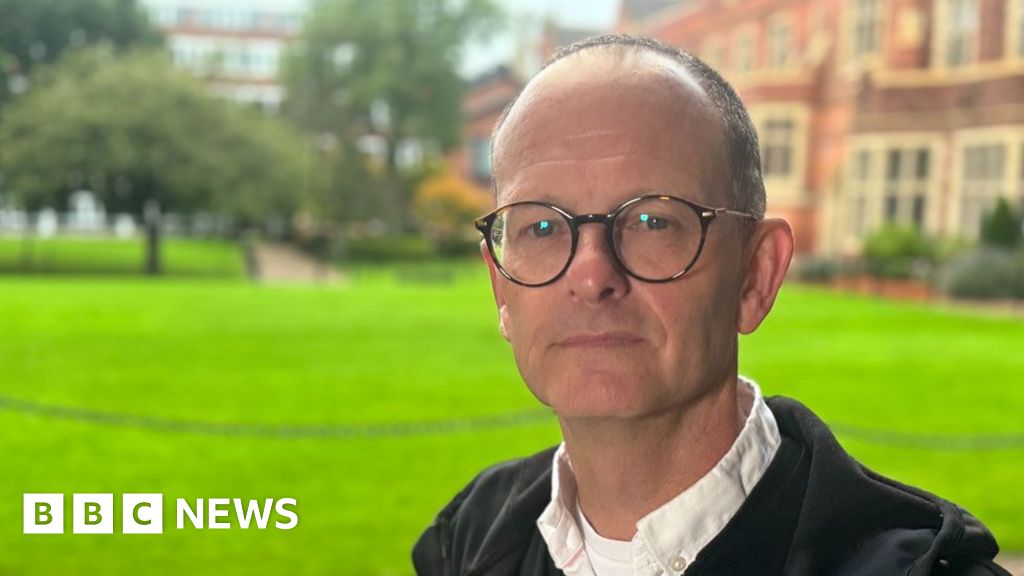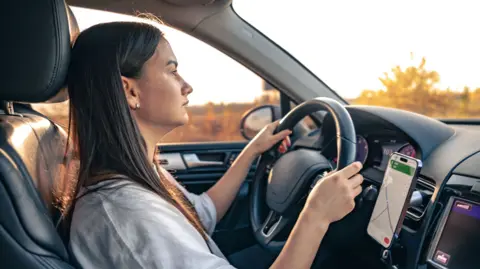 Getty Images
Getty ImagesWhen the first steam-powered car arrived on the island of Ireland in 1896, the impact motorised transport would have was beyond imagination.
More than a century later, cars have transformed our lives in this largely rural place – reducing travel times, keeping people connected and opening up a world of possibilities.
But all that has come at a price.
Transport is now our second highest greenhouse gas emitter, accounting for 18.1% of Northern Ireland’s emissions.
How do we get around in NI?

Northern Ireland has been the slowest nation in the UK to reduce its emissions.
For most of us, the car is still the default option.
On average, we each take 838 journeys a year, travelling almost 5,000 miles and more than two-thirds of those trips are by car.
About a third of journeys are less than two miles long and half of those short journeys involve driving.
Just 2% of all our journeys are by public transport.
Changing the transport choices we make could have a huge impact on our emissions.
“We’ve built how we move, how we work and shop, and all the rest of it around private car ownership,” said Declan Allison from Friends of the Earth.
“And that just can’t continue.
“So we need to move to more sustainable forms of transport, such as walking or cycling or public transport.
“But more importantly, we need to redesign our towns and cities so we don’t need to travel quite so much, so we can shop locally, we can work near where we live, we can socialise close to where we live.”
There is a target of spending 10% of Northern Ireland’s overall transport budget on active travel – walking and cycling.
NI’s 2050 net zero climate target
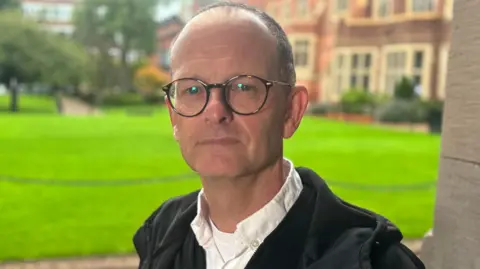
Northern Ireland has a legally-binding target of cutting emissions to net zero by 2050 .
That would mean what we are producing is offset or balanced by what we are removing from the atmosphere via emissions reduction, storage or other methods.
But there are no specific targets for transport in the Climate Change Act.
And there are concerns about our ability to reach any of the aims.
“If we’re not going to get real about reducing transport, we’re never going to meet the climate targets that the government has signed up to,” said Geraint Ellis, professor of environmental planning at Queen’s University Belfast.
“Basically from, I’d say the 1950s, it’s been the car that has been a focus, its obvious attractions, the lifestyle, the convenience.
“But clearly the impact it has on air quality, structure of cities, community, divisions, they’ve never been really addressed.
“So I think we’ve built in dependence on the car, so now we’re in a situation that it’s actually really, really difficult to start extracting ourselves from that.
“The whole structure of our cities, the way we spend the transport budget, the whole mindset and culture of what we’re doing – it’s a car-led society at the moment.”
What difference will Grand Central Station make?
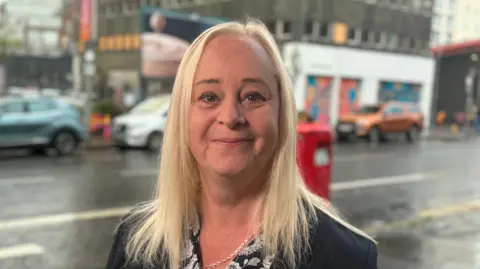
The Grand Central Station vision is a central hub with the public transport ‘spokes’ reaching out across Northern Ireland.
People will be encouraged to think about how they might do at least part of a journey by public transport or active travel – walking and cycling.
It is hoped accessibility and convenience will make that shift easier.
“This new hub allows Translink to rationalise the services, it allows them to put on the capacity to have the Enterprise train sitting in Belfast,” said civil engineer Karen McShane.
“It allows them to bring in the aspirations of the All-Island Strategic Rail Review and look to the future to increase the capacity of our rail services.
“As well as that, it’s obviously integrated with the bus services, so we’ve got an opportunity for people to use park and ride.
“We have an opportunity for them to use the express Goldliner services to come into the city centre and then use the rail network if they need to, to transfer onto other forms of travel.
“We’ve got new, improved pedestrian and cycling facilities to allow people to walk and cycle into the hub and use it as a transfer.”
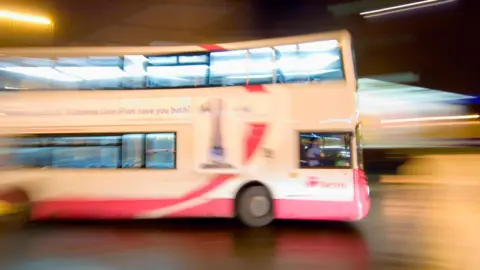 Getty Images
Getty ImagesBuses are the only form of public transport that every town in Northern Ireland has access to.
Even if the All-Island Strategic Rail Review is fully implemented, Fermanagh will be the only county without a rail connection.
But the clue is in the name – “strategic”.
Trains are just one element of a modern transport system.
And in a largely rural place with a government under severe financial pressure, there are choices to be made between what is possible and what is realistic.
Our scattered population means there is no “one size fits all” answer.
And the clock is ticking on our climate change goals.

